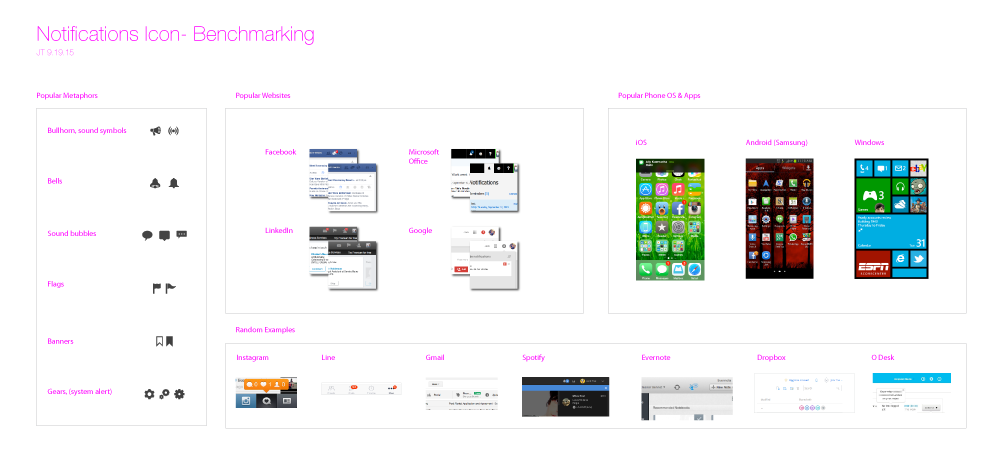
DAQRI empowers workforces to be more effective with Augmented Reality technology. Their products link digital content to the real world to accelerate productivity, communication, and key business processes. From the office to the factory floor, DAQRI customers improve workplace efficiency, safety, and their bottom line. While working on this project, I was on contract from Westminster but worked on-site as the User Interface Designer.
My Role:
My journey with Daqri began at their nascent stage, when they were still brainstorming their Augmented Reality (AR) offerings. Back then, they were excited about the possibilities of QR code technology in advertising. I vivedly remember a demo where they scanned their unique QR code in a magazine ad, and voilà! A 3D image or video materialized on our phones, seamlessly merging with the printed ad. It was pure magic, and the spark of something revolutionary.
TechCrunch video covering CES 2016Fast forward to 2013, their Series A funding marked a pivotal shift. Daqri pivoted towards the B2B market, focusing on industrial applications. Imagine this: a QR code sticker plastered on a machine. Scan it with your phone, and bam! Interactive instructions or data overlay your screen, bringing the physical equipment to life with digital information.
As a user interface (UI) designer, I bridged the gap between a visual product designer's artistic prototypes – meant to woo investors – and the actual software. My early contributions in marketing and iconography paved the way for me to delve into the UI for their 3D content creation software, aptly named 4D Studio.
Original Prototype ArtworkThe existing prototype artwork was a launchpad, not a blueprint. It showcased the vision, igniting investor interest and securing funding. But transforming that artistic mock-up into a tangible product demanded a different breed of magic. The original prototype designer had exited the project, leaving us, the in-house team, to translate their canvas dreams into digital reality.
We soon realized the chasm between "wowing investors" and "wowing users." The prototypes, once ideal for pitches, now felt unrealistic and rough at the user experience level. Every detail, every pixel, mattered in this intricate, tech-heavy project.
 Provided detailed research on competing user experiences to help determine familiar user patterns.
Provided detailed research on competing user experiences to help determine familiar user patterns.
To bridge this gap, I partnered with a designated product manager for each feature. We'd iterate and finesse, pushing the design until it achieved a sweet spot - user-friendly yet aesthetically striking. Once approved, the baton would pass to the engineering manager, who'd lead the next design phase in translating our pixel plans into functional code.
 Early 4D Studio pictured left and pictured right is a gold master candidate. The difference in the change from media to industrial subject matter of the 4D experiences tells the story of DAQRI itself.
Early 4D Studio pictured left and pictured right is a gold master candidate. The difference in the change from media to industrial subject matter of the 4D experiences tells the story of DAQRI itself.
It was a hectic experience, juggling user needs, technical constraints, and artistic vision. But with each hurdle cleared, the once ethereal prototype morphed into a groundbreaking tool, ready to revolutionize the way we interact with the world around us.
In the early days of crafting Daqri's interface, each stand-up meeting brought a new revelation – a missing cog, a hidden layer of complexity. Features bubbled up from global considerations to pixel-perfect intricacies within a single panel. The pace was growing, and fast.
From the engineering trenches, the challenge mirrored ours. They hunted for existing libraries and tech magic to breathe life into our vision. Re-inventing entire software platforms for a single UI element would be madness. So, after figuring out the feature's soul, I'd often partner with engineers, bending my design to technology's limitations as best as it would allow.
Yet, it had its silver lining. Early stumbles exposed limitations, helping us decide which tech horse to ride long-term. We learned on the fly, wrestling each new element, each hurdle, transforming every lesson into experience for the decisions ahead.
“Jack was my go-to UI designer during the DAQRI start-up phase. From concept thru product release he delivered rapid iterations on time and within budget some very challenging User Interfaces for an Augmented Reality creator platform. This was the early days of AR where solutions were not obvious and required a collaborative mindset between design, engineering and product. Cool under pressure and not afraid to push back when needed, I would gladly work with Jack again on any UI project requiring creativity, collaborative problem solving, and an intuitive, visually appealing interface from concept thru product release. ”
- Katherine Weimelt | Director of Product Management, Platform
The testing group in Los Angeles provided feedback for the product managers, and the 4D Studio interface hardened over time. No longer prototypes, sleek functionalities emerged, former problems turned into working solutions. Login, assets, the 4D stage – everything had to flow together to feel seamless.
 4D Studio notifications drop-panel evolution as testing balanced contrast, readability, and aesthetics.
4D Studio notifications drop-panel evolution as testing balanced contrast, readability, and aesthetics.
But the story took some unexpected turns. DAQRI, in a bold move, decided to take control of the hardware and create an AR helmet. This development increased our design considerations. We could barely bend software performance to our will, but the dance became infinitely more complex – no more leaning on third-party platforms for consumption.
The biggest evolution of the software interface was to officially move away from the overall look and feel of the original prototype artwork. As technology dictated, and visual tastes moved forward — all parties wanted to have an interface that felt like it fit. By this time, the team had spent many more years working on the interface than the prototype designer had.
As testing unfolded, the results resonated louder and clearer. Hardware and software, once awkward, now moved in unison. The software had found its voice, performing at a much higher rate leading to further evolution.
DAQRI's story is one of both dazzling potential and unfulfilled promise. They burst onto the scene in the early days of AR, captivating audiences with their vision for revolutionizing how we interact with the world around us.
DAQRI didn't shy away from expanding, snapping up companies with crucial technologies to fuel their ambitions. They even established testing facilities in Los Angeles, Silicon Valley, and even Ireland, showcasing a global reach.
 Style tiles were used to help the different teams agree on the direction of the evolving software aesthetic.
Style tiles were used to help the different teams agree on the direction of the evolving software aesthetic.
Their shift towards smart glasses in their last phase reflected the rapidly evolving AR landscape. However, it proved a gamble too far, pushing their market plans too far in the future and lengthening their costly research and development phases.
DAQRI basked in the spotlight of major publications like Wired and CNBC, garnering a whopping $275 million in funding. Their early successes were truly groundbreaking for the time, paving the way for future AR advancements in the industry.
 Press images from DAQRI through the years.
Press images from DAQRI through the years.
Ultimately, DAQRI's downfall may have been its very ambition. They aimed to conquer the nascent AR market before the technology and market were fully ready. As tech journalists lamented in their post-mortem analyses, it was a case of being "too much, too early."
The product and engineering teams that I worked with were tireless in their pursuit of perfecting the User Experience for the project. Even though the project evolved quickly, I did my best to provide interface design work that pushed the limits of AR but also got the engineering team through the latest cycle. Working for DAQRI on such a momentous product category was an incredible experience.